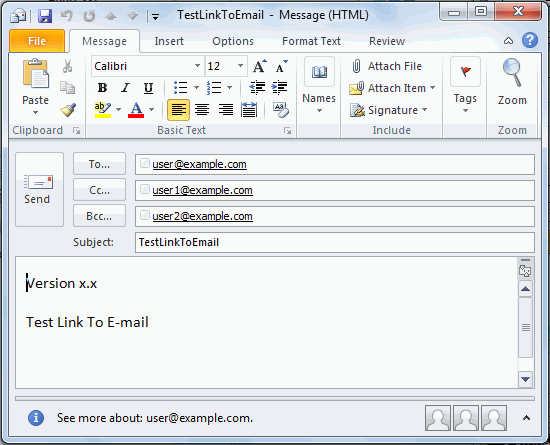

This dialog appears when you right-click an object, click Link on the shortcut menu. It helps you to link the object to a report, a location specified by a URL, an e-mail address, or a Blob data type field as required.
Conditional Link
Specifies whether it is a conditional link. If checked, the object can be linked to different targets based on different conditions.





Link Type
Specifies the type of the link target for the object if it is not a conditional link or for the object under the selected condition if it is a conditional link. It can be one of the following:
More
Displays more link options. Available only for the Report and Content link types.
OK
Applies the settings and closes the dialog.
Cancel
Cancels the changes and exits the dialog.
Help
Displays the help document about this feature.
It helps you to link a specified object to a report. See the dialog.
Report
Specifies the target linked report. Click the Browse button to select the desired report in the Select a Report dialog.
Target
Specifies the window or frame in which to load the linked report.
Filter tab
Specifies the filter conditions based on which the link relationship between the primary report and the linked report is set up.




Parameters tab
This tab is available when the linked report uses parameters. It helps you to assign values to the parameters of the linked report automatically.
Advanced tab
Specifies to pass the values of the filter objects such as filter controls and sliders in the primary report to those in the linked report.


 to select a filter object in the primary report in the Select Value dialog.
to select a filter object in the primary report in the Select Value dialog. to select a filter object in the linked report in the Select Value dialog. You need to make sure that values of the filter object in the primary report can be applied to the filter object in the linked report in the same line.
to select a filter object in the linked report in the Select Value dialog. You need to make sure that values of the filter object in the primary report can be applied to the filter object in the linked report in the same line.Pass style group information down to linked report
Specifies whether or not to apply the style group of the primary report to the linked report.
It helps you to link a specified object to a location specified by a URL. See the dialog.
Hyperlink
Specifies the URL for the hyperlink that is to be used to link the object. Fields can work in the hyperlink only when they are inserted via the Add Dynamic Field option.
Target
Specifies the window or frame in which to load the location specified by the URL.
It helps you to link the specified object to an e-mail address. See the dialog.
Hyperlink
Specifies the e-mail address that the object will be linked to. Then after you click the trigger object, an e-mail will be popped with the information specified in the Hyperlink box. You can then further customize the e-mail and send it.
Enter the e-mail address in the Hyperlink box using the syntax sAddress[sHeaders]. The following are details about the syntax:
Hyperlink examples:
user@example.comuser1@example.com;user2@example.com${Customer Name}@jinfonet.com, here ${Customer Name} is a field name. salesmanager@${Country}.jinfonet.com, here ${Country} is a field name.user@example.com?CC=user1@example.com&BCC=user2@example.com&subject=TestLinkToEmail&Body=Version%20x.x%0D%0A%0D%0ATest%20Link%20To%20E-mail
Here is the e-mail result:

Note: Fields can work in the hyperlink only when they are inserted via the Add Dynamic Field option.
Add Dynamic Field
Opens the Select Field dialog to insert a field into the e-mail address.
It helps you to link the object to a Blob data type field. The Blob data type field will be bound to the object and displayed as a hyperlink, you can download the Blob content by clicking this hyperlink. In JReport, Blob could be image, Binary, Blob, Clob, LongBlob, LongClob, Varbinary, Longvarbinary, and so on. See the dialog.
Query
Specifies the business view which contains the required Blob data type field. Only query based business views from the same data source connection as the current report are listed.
When you set the link type to Content, JReport will check whether there are such kind of business views available. If not, options for this link type will be disabled.
Content Type
Specifies the content type for the Blob type data. You can click the button  to bind it with a string type business view element or a record level pass one formula in the selected business view, or with a dynamic formula in the current report.
to bind it with a string type business view element or a record level pass one formula in the selected business view, or with a dynamic formula in the current report.
File Name
Specifies the file name for the linked Blob type data. You can click the button  to bind it with a string type business view element or a record level pass one formula in the selected business view.
to bind it with a string type business view element or a record level pass one formula in the selected business view.
Content
Specifies the Blob data type field in the selected business view.
Filter tab
Specifies the link conditions between the business view used by the current report and the business view that contains the linked Blob content.


Parameters tab
This tab is available when the business view that contains the linked Blob content uses parameters. It helps you to assign values to the parameters automatically.